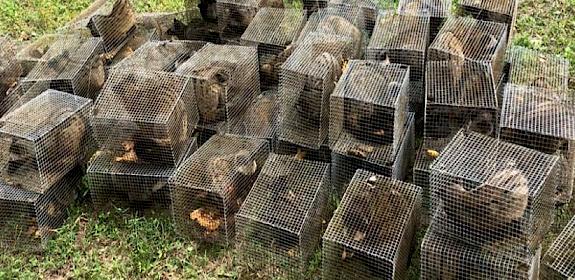Threats from over-consumption highlighted in IUCN Red List update
Gland, Switzerland, 14th November 2018—an update of The IUCN Red List of Threatened SpeciesTM released today reveals that overfishing is causing fish species in parts of the developing world to decline, with 13% of the world’s grouper species and 9% of Lake Malawi fish now threatened with extinction, while overexploitation threatens the Vene Tree Pterocarpus erinaceus—an important source of timber—which enters The IUCN Red List as Endangered.
Fifty-four fish species from two important fisheries are threatened by unsustainable fishing, according to the Red List update. Some 9% of 458 fish species assessed in Lake Malawi are at high risk of extinction, causing concern for regional food security: more than a third of Malawians depend on Lake Malawi, Africa’s third largest lake, for their food and livelihoods. A similar situation exists for fisheries in the Lake Victoria Basin.
“At least two billion people depend directly on inland freshwater fisheries such as Lake Malawi for their survival,” said William Darwall, Head of IUCN’s Freshwater Species Unit.
“Almost 80% of catch from freshwater fisheries comes from food-deficit countries—where the general population does not have sufficient food to meet recommended daily calorie intake—yet freshwater resources are not prioritised on national or international agendas.”
The first reassessment of all 167 species of grouper—an economically valuable type of sea bass occurring widely in the Atlantic, Caribbean and Indo-Pacific regions—confirms that 13% are threatened by overfishing, impacting local communities in developing tropical and sub-tropical countries.
On land, in West and Central Africa, the Vene Tree, a type of African Rosewood, has been assessed as Endangered, threatened by felling to supply booming demand for household products including furniture, flooring, household utensils and in construction. Its demise threatens local livelihoods dependent on the tree for animal forage, fuel, clothes dye and medicinal use. Between 2009 and 2014, there was a 15-fold increase in the trade of timber from the Vene Tree to meet high demand from China.
However, the latest update is not all grim news: species like the Mountain Gorilla Gorilla beringei beringei and the Fin Whale Balaenoptera physalus have benefitted from collaborative conservation action to protect them.
Anti-poaching patrols and measures including snare removal have contributed to the growth in Mountain Gorilla populations, which has moved from Critically Endangered to Endangered, while the Fin Whale has moved from Endangered to Vulnerable, owing to bans on whaling.
These conservation successes are proof that the ambitious, collaborative efforts of governments, business and civil society could turn back the tide of species loss
Inger Andersen, IUCN Director General
“Unfortunately, the latest update also underlines how threats to biodiversity continue to undermine some of society’s most important goals, including food security. We urgently need to see effective conservation action strengthened and sustained.
“The ongoing UN biodiversity summit in Egypt provides a valuable opportunity for decisive action to protect the diversity of life on our planet.”
Other species in today’s update are assessments for all 20 Aquilaria Agarwood species, whose resin-impregnated infected heartwood has been highly prized for centuries in perfume, incense and traditional medicine across Asia and the Middle East. Meanwhile, Titan Arum Amorphophallus titanium—the world’s largest inflorescence, endemic to the island of Sumatra, Indonesia—is listed as Endangered, and the largest North American tortoise species, Bolson Tortoise Gopherus flavomarginatus, has changed status from Vulnerable to Critically Endangered.
The IUCN Red List now includes 96,951 species of which 26,840 are threatened with extinction.




